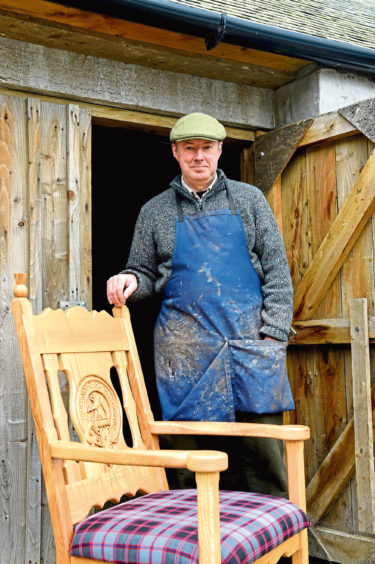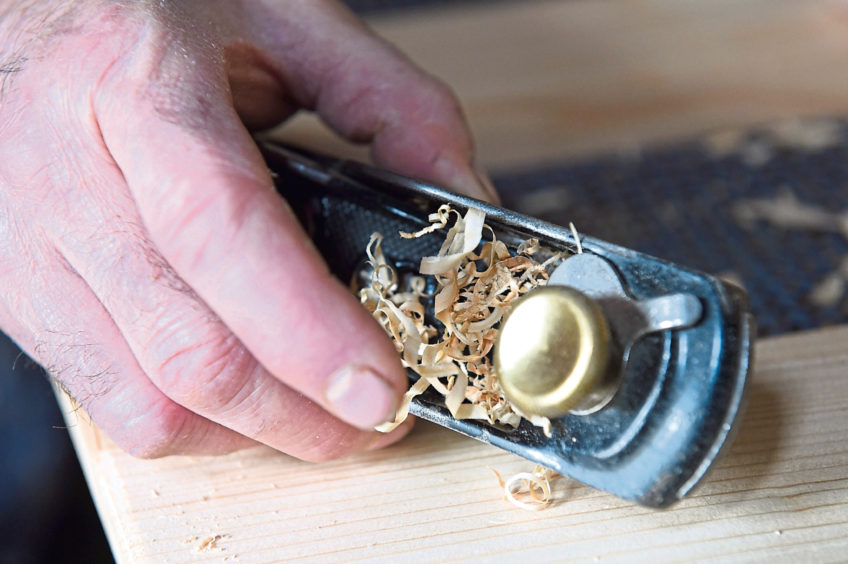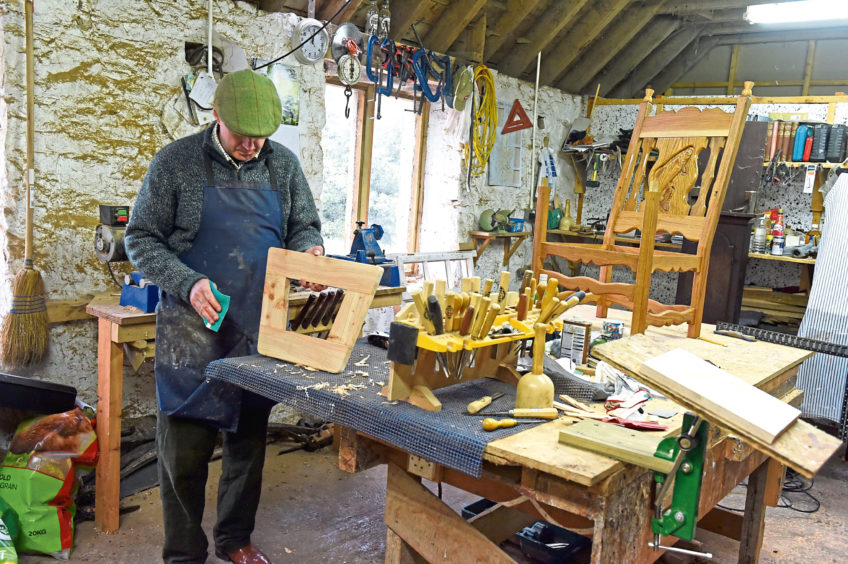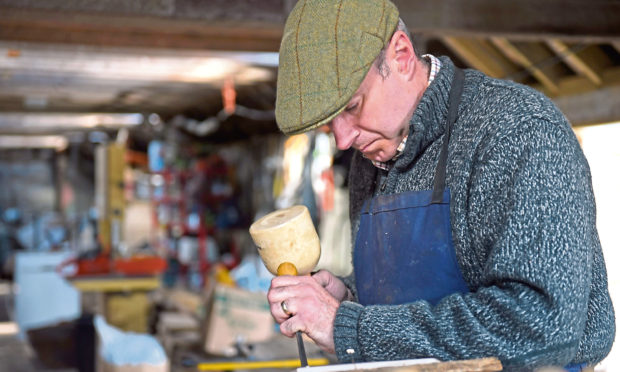Wood shavings flutter to the floor as Julian Schmechel gets to work, his chisel revealing the finer details underneath.
As the wood takes shape, it is almost as if the block has shed its skin and burst forth like a butterfly.
What was once a felled oak tree starts afresh as a salmon mid leap, the intricate details rippling through the air.
It is all in a day’s work for Julian, who has been carving wood for decades at his home in Lumsden near Huntly.
Weight of history on his side
As sole owner of Burnside of Ballintomb Furniture Makers & Wood Carvers, he creates stunning pieces in his workshop.

Julian represents a drastically changed industry, with people more likely to buy their dining room table from a chain furniture store then a traditional wood carver.
But rather then feel vulnerable as the last man standing, Julian is proud to continue with the business – perhaps because he has the weight of history on his side.
His great great grandfather, who emigrated to the UK from Prussia around 1860, started carving furniture in an upstairs room before passing the trade on.
And while Julian may not have a successor, he believes his craft is worth saving and holds wood-carving courses in a bid to teach others.
‘I think to have four generations is quite a rare thing.’
Although Covid-19 has prevented eager pupils from visiting, he is relieved to have taken up his tools once more.
“It has been a worrying time, but my workshop is still going strong,” said Julian.
“I’ve lived here for 32 years, although I’m originally from Lancashire.
“I’m fourth generation; wood carving all began with my great great grandfather.
“He was a keen woodworker, and his workshop was in his home in an upstairs room.
When I was a boy it wasn’t unusual to follow in your father’s footsteps. Now it’s a completely different universe, unfortunately.”
“His son was also very keen, and then passed on the skills to my father who handed wood carving on to me.
“I think to have four generations is quite a rare thing.
“We live in a strange world now. The older I get, the less I understand.
“When I was a boy it wasn’t unusual to follow in your father’s footsteps. Now it’s a completely different universe, unfortunately.”
Did Julian inherit the skills to succeed at his craft, or was it simply luck that saw him continue the trade?

He’s not quite sure.
“I think people have genetic propensities for certain things,” he said.
“You’re good at what you enjoy doing, or maybe you enjoy doing what you’re good at.
“In my case, there’s clearly something genetic.
“My family has an aptitude for working with wood, we’re all very creative people.
“My father passed away in March, and he was one of the most technically brilliant people I’ve ever met.
“If you’re good at something you can make it look easy when in fact it’s anything but.”
Creating something even more practical and beatiful
Certainly, to watch Julian at work is to marvel at his craftsmanship and the ease with which he handles tools.
Some of the tools have been passed down from his grandfather and are still used in Julian’s work today.
“I think the thing that drives me is the fact you are creating something,” he said.
“You’re taking a piece of wood, which can be beautiful in itself, and you’re creating something even more practical and beautiful.
“You put yourself, your character and your soul into your work. You transfer your own thoughts, passions and standards.

“They say ‘by a man’s work shall you know him’ and it’s absolutely right.
“I was familiar with wood and tools from childhood, probably by osmosis. I knew pine, beach, oak, elm or ash because these woods were so familiar.”
‘We’re making things that will last a lifetime amidst our cheap, throw-away society’
Julian left school at 16 and immediately started work as his father’s apprentice. He believes he still has much to learn, though.
“I left school on the Friday and started work on the Monday,” said Julian.
“You can never be at the stage where you know everything about your craft,” he added.
“I find it wonderfully rewarding to see the talent come out in other people. It’s surprising who on the course has the aptitude – sometimes it’s the little old lady in the corner. Give her a carving chisel and she is a natural.
“We live in a world of imagined reality, where everything is on a screen. It’s hard to find tangible things.
“It’s vital that we keep skills such as wood carving or dry stone walling alive.
“We’re making things that will last a lifetime amidst our cheap, throw-away society.”
Julian struggles to find local wood due to the number of saw mills which have closed, in part because of dwindling profits.
His favourite wood to work with, however, is oak.
“The old rhyme says oak takes 300 years to grow, 300 years to live and 300 years to die,” said Julian.
“It endures, and that’s pretty special,” he added.
